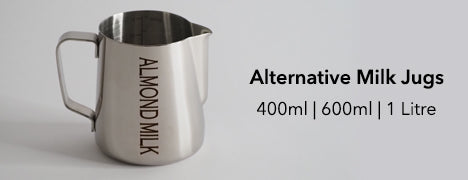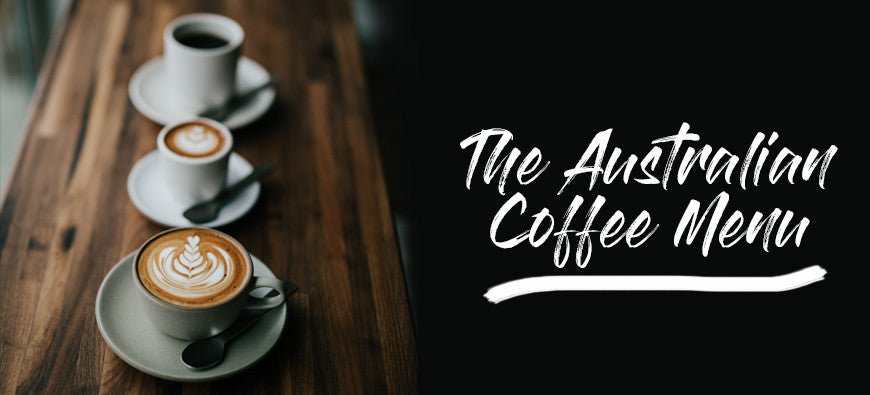How did Coffee become the Most Popular Beverage in the World?
Here is how it happened:
500’s - Coffee legend claims its discovery by goat herder Kaldi.
525 AD - Ethiopia invaded Southern Arabia. Possible reason for the coffee plants arrival in Yemen on the southern tip of the Arabian Peninsula.
700’s - Coffee had a presence around the Red Sea area.
800 AD - The first definite record of coffee being traded when Homer, and many Arabian legends, tell the story of a mysterious black and bitter beverage with powers of stimulation being drunk by the Mufti people of Aden.
1000 AD - Arab traders bring coffee back to their homeland and cultivate the plant for the first time on plantations. They also boil the beans, creating a drink they call Qahwa (literally "that which prevents sleep").
1000 AD - Members of the Galla tribe in Ethiopia notice that they get an energy boost when they eat a certain type of berry, ground up and mixed with animal fat.
1000 AD - Records of coffee seed and skin being commercially removed from the berry. Avicenna was administering coffee as a medicine.
1200’s - Coffee arrives in Turkey where it is roasted over an open fire and boiled in water.
1400’s - Extensive commercial planting of coffee in Yemen.
1453 - Coffee is introduced to Constantinople by Ottoman Turks.
1475 - The first known coffee shop is opened called “Kiva Han” in Constantinople (later called Istanbul)
1475 - Turkish law was enacted that made it legal for a woman to divorce her husband if he failed to provide her with her daily quota of coffee.
1500’s - First traders were selling coffee in Europe from the ports of Alexandria and Smyrna.
1500’s - Records show that coffee was already being drunk in Egypt, Syria, Persia and Turkey at this time.
1511 - Khair Beg, the corrupt governor of Mecca, tries to ban coffee for fear that its influence might foster opposition to his rule. The sultan sends word that coffee is sacred and has the governor executed.
1540's. - Coffee roasting was prevalent in Turkey.
1543 - Ottoman Sultan in Istanbul outlawed coffee drinking because it started to get more recognition than he wanted.
1582 - G. Francesco Morosini, high judge of Venice, and ambassador of the Venetian Republic to the Sultan, records details of coffee consumption and coffee houses.
1587 - Sheikh Abd-al-Kadir writes, "No one can understand the truth until he drinks of coffee's frothy goodness."
1591 - Paduan Prospero Alpino, a famous botanist and physician described coffee in his book "De Planctis Aegyptii et de Medicina Aegiptiorum"
1600 - Prior to 1600 - No coffee seed sprouted outside Arabia.
1600’s - Coffee, introduced to the West by Italian traders, grabs attention in high places. In Italy, Pope Clement VIII is urged by his advisers to consider the favourite drink of the Ottoman Empire part of the infidel threat. One sip, however, and he decides to baptise it instead, making it an acceptable Christian beverage.
1607 - Coffee drinking is believed to have arrived in North America when Captain John Smith helped to found the colony of Virginia at Jamestown.
1615 - The first coffee sold in Europe was in pharmacies as a medicinal remedy.
1615 - Venice received Europe's' first shipment of green coffee beans. Coffee consumption was known in Venice and Marseilles but there was no trade in beans there.
1644 - A ship from Alexandria unloads a cargo of coffee in Marseilles. Around the same time the first coffee outlets are opened in London, Marseilles and Amsterdam.
1645 - First coffee-house opens in Venice. Others followed in many Italian towns, among them Turin, Genoa, Milan, Florence, Rome and Naples.
1650 - A Muslim pilgrim from India named Baba Budan was the first to sneak some seeds out of Arabia into India.
1652 - The first coffee-house opened in England in Oxford by a Turkish Jew named Jacob. Coffee-houses multiply and become such popular forums for learned - and not so learned - discussions that they are dubbed " penny universities" (a penny being the price of a cup of coffee).
1656 - Coffee drinking prohibited & coffee-houses closed in Turkey by the Grand Vizir of the Ottoman Empire
1668 - Coffee had replaced beer as New York City's favourite breakfast drink with coffee-houses in New York, Boston, Baltimore, Philadelphia and elsewhere.
1668 - Edward Lloyd's coffee-house opens in England and is frequented by merchants and maritime insurance agents. Eventually it is where Lloyd's of London is formed, the best-known insurance company in the world.
1669 - The Ambassador of the Turkish Ottoman Empire to the court of Louis XIV in Paris brought coffee into fashion in Parisian High Society, despite the fact that Louis XIV does not like it very much preferring hot chocolate
1674 - The Women's Petition Against Coffee was set up in London.
1675 - England's King Charles tried to suppress coffee-houses, supposedly because men were neglecting their families to discuss business and politics over coffee. His proclamation is revoked after public outcry.
1675 - The Turkish Army surrounds Vienna. Franz Georg Kolschitzky, a Viennese who had lived in Turkey, slips through the enemy lines to lead relief forces to the city. The fleeing Turks leave behind sacks of "dry black fodder" that Kolschitzky recognizes as coffee. He claims it as his reward and opens central Europe's first coffee house. He also establishes the habit of refining the brew by filtering out the grounds, sweetening it, and adding a dash of milk.
1683 - Caffe Florian, opened in Italy.
1686 - First cafe serving coffee is opened in Paris
1690 - With a coffee plant smuggled out of the Arab port of Mocha, the Dutch become the first to transport and cultivate coffee commercially, in Ceylon - and in their East Indian colony of Java, source of the brew's nickname.
1699 - Invasion of Europe the Turks again. Coffee continues to find new homes.
1700’s - many Italian towns had adopted the same Venetian coffee habit.
1700’s - More coffee-houses in London than there are today.
1700's - The Dutch were the sea traders which did most the transferring of goods around the world.
1714 - The Burgomaster of Amsterdam gave King Louis XIV of France at the Chateau of Marly a seedling coffee plant from the Amsterdam Botanical Gardens
1720 - Several hundred coffee houses are to be found in Paris. During the same period, coffee trees are imported into Guyana.
1721 - First coffee house opens in Berlin
1723 - Chevalier Gabriel Mathiew de Clieu , after countless difficulties, manages to import coffee trees to Martinique in the Caribbean. Eventually, 90 percent of the world's coffee spreads from this one plant.
1727 - The French and the Dutch, anxious to protect their monopoly over cultivation, are outsmarted by the crafty trick of a Brazil's emperor who sends Lt. Col. Francisco de Melo Palheta to French Guiana to mediate a border dispute between the French and Dutch. He seduces the Governor of Guyana's wife to obtain a few precious fertile seeds. Coffee growing was started in North Brazil.
1727 - Vietnam – Coffee plant arrives.
1729 - Coffee cultivation begins in Mexico
1730 - Jamaica – Coffee plant arrives.
1732 - Johann Sevastian Bach composes his Kaffee-Kantate. Partly an ode to coffee and partly a stab at the movement in Germany to prevent women from drinking coffee (it was thought to make them sterile), the cantata includes the aria, "Ah! How sweet coffee taste! Lovelier than a thousand kisses, sweeter far than muscatel wine! I must have my coffee."
1740-1805 - Coffee growing reached its top spread in Central and South America.
1748 - Cuba – Coffee plant arrives.
1750 - Guatemala – Coffee plant arrives.
1750 - One of Europe's first coffee-houses, Cafe Greco, opens in Rome.
1763 - 218 coffee houses in Venice.
1767 - The first large coffee estate in Brazil is said to have been planted.
1773 - The "Boston Tea Party", changed America from drinking tea to coffee which was seen as a patriotic duty.
1775 - Prussia's Frederick the Great tries to block imports of green coffee, as Prussia's wealth is drained. Public outcry changes his mind.
1777 - De Clieu’s own estate in Martinique yields a total of about 18 million trees.
1779 - Costa Rica – Coffee plant arrives.
1784 - Venezuela – Coffee plant arrives.
1790 - Mexico – Coffee plant arrives.
1791 - The slaves revolt on the coffee plantations on the island of Santo Domingo.
1798 - During the Egyptian campaign, Napoleon drinks a lot of coffee. In captivity on Saint Helena, he writes that, throughout his life, he has kept seven coffee makers permanently on the stove.
1799 - Colombia – Coffee plant arrives.
1800’s - Brazil's monster harvests turns coffee from a drink for the elite into an everyday drink for the people.
1800-1850 - Coffee became the most important economic resource of Brazil.
1801 - A leaflet printed in Milan gives coffee high credit by some physicians as a "cure-all".
1822 - A Frenchman Louis Bernard Rabaut invented a machine which forced the hot water through the coffee grounds using steam instead of merely letting it drip through.
1825 - Hawaii – Coffee plant arrives.
1840 - Salvador – Coffee plant arrives.
1878 - Central Africa – Coffee plant arrives.
1885 - A process of using natural gas and hot air becomes the most popular method of roasting coffee.
1886 - Former wholesale grocer Joel Cheek names his popular coffee blend "Maxwell House," after the hotel in Nashville, TN where it was served.
1887 - The coffee plant made its way to Tonkin in Indo-China.
1893 - The coffee plant completed its journey around the world when the coffee plant was introduced into Kenya and Tanzania just south of the original birthplace Ethiopia.
1896 - Coffee was taken to Queensland, Australia.
1900 - Hills Bros. begins packing roast coffee in vacuum tins, spelling the end of the ubiquitous local roasting shops and coffee mills.
1900's - In Germany, afternoon coffee becomes a standard occasion. The derogatory term "KaffeeKlatsch" is coined to describe women's gossip at these affairs. Since broadened to mean relaxed conversation in general.
1901 - Luigi Bezzera filed a patent for a machine that contained a boiler and four "groups".
1901 - The first soluble "instant" coffee is invented by Japanese-American chemist Satori Kato of Chicago.
1902 - The discovery of Robusta coffee. Robusta coffee plants then found there way to Madagascar, West Africa, Angola, West Indies, and Vietnam.
1903 - German coffee importer Ludwig Roselius turns a batch of ruined coffee beans over to researchers, who perfect the process of removing caffeine from the beans without destroying the flavour. He markets it under the brand name "Sanka" (a contraction of the French sans caffeine).
1903 - Madagascar – Coffee plant arrives.
1905 - Desiderio Pavoni purchased Luigi Bezzera's patent and began manufacturing machines in Italy based on the patent. Pavoni & Vittoria Arduino machine is soon followed by Cimbali, San Marco, Marzocco, Gaggia, and Faema.
1906 - Marks the debut of the Bezzera "Ideale" machine at the Milano Fair.
1906 - George Constant Washington, an English chemist living in Guatemala, notices a powdery condensation forming on the spout of his silver coffee carafe. After experimentation, he creates the first mass-produced instant coffee (his brand is called Red E Coffee), which is followed by dozens of other brands.
1907 - West Indies – Coffee plant arrives.
1908 - Melitta Bentz, a housewife from Dresden, invents the first coffee filter using blotting paper.
1909 - Instant coffee first marketed as Red E Coffee.
1910 - Angola – Coffee plant arrives.
1920 - Prohibition goes into effect in the United States. Coffee sales boom.
1923 - Sanka - Decaf coffee was introduced into the US.
1927 - The first espresso machine was installed in the United States at Reggio's in New York. The "La Pavoni" machine is on display there today.
1933 - Dr. Ernest Illy develops the first automatic espresso machine.
1938 - M. Cremonesi developed a piston pump that forced hot, not boiling, water through the coffee.
1938 - Nescafé instant coffee is created by the Nestlé company as it assists the Brazilian government in solving its coffee surplus problem. Nescafe (Freeze Dried) was developed and first introduced into Switzerland.
1939 - Latin American countries made arrangements to allocate export quotas.
1940 - During W.W.II, American soldiers are issued instant Maxwell House coffee in their ration kits. Back home, widespread hoarding leads to coffee rationing.
1940 - First Coffee production quotas established and administered by an Inter-American Coffee Board.
1940 - The US imports 70 percent of the world coffee crop.
1947 - Achilles Gaggia perfects the espresso machine with a piston that creates a high pressure extraction to produce a thick layer of crema. Cappuccino is named for the resemblance of its colour to the robes of the monks of the Capuchin order.
1950s - Gaggia brought his revolutionary espresso machine to London and opened a mocha bar in Frith Street in Soho.
1950's - New Guinea began cultivating coffee.
1952 - Government finished rationing of tea & coffee trade in Britain.
1956 - Instant coffee (quick making between ads) really took off after when commercial television was introduced.
1956 - Beginning of the modern era of coffee houses in areas such as North Beach in San Francisco and Greenwich Village in New York.
1959 - Heat exchanger invented to combat foul water due to corrosive build-up in the boilers.
1960 – The fictional advertising character Juan Valdez, while accompanied by his loaded pack mule, is introduced by the Columbian Coffee Federation.
1961 - The first pump driven espresso machine was produced by M. Faema. The water was forced through the coffee by an electric pump rather than a manually operated piston.
1961 - Carnation introduces Coffeemate non-dairy creamer, a powder composed of corn syrup solids, vegetable fat, sodium caseinate, and various additives.
1962 - The idea by the UN of establishing coffee export quotas on a worldwide basis was adopted.
1962 – A vacuum packages method is patented by the Melitta Bentz company.
1963 – Bunn corporation introduces the automatic drip coffee maker for use in restaurants.
1966 - A Dutch-American man named Alfred Peet opens Peet’s Coffee in Berkeley, California.
1968 - The Coffee export quotas agreement was re-negotiated
1971 - Starbucks opens first store in Seattle’s Pike Place Market with Jerry Baldwin, Zev Siegl, and Gordon Bowker.
1976 - The Coffee export quotas agreement was re-negotiated.
1982 - The charter for the Speciality Coffee Association of America (SCAA) is written.
1983 - The Coffee export quotas agreement was re-negotiated
1984 - Howard Schultz convinces the founders of Starbuck states the coffeehouse concept in downtown Seattle,where the first Starbucks® Caffè Latte is served.
1987 - Howard Schultz buys Starbucks and begins to turns it into an worldwide specialty coffee chain.
1989 - Producing nations failed to sign a new export quotas pact and, as a result, world coffee prices plunged.
1990’s - There were a series of crop failures, most notably in Brazil which meant that coffee prices increased dramatically.
1992 - Starbucks completes initial public offering (IPO), Total stores: 165
1995 - Coffee is the worlds most popular beverage with more than 400 billion cups being consumed each year. It becomes a world traded commodity.
1995 – Vietnam begins large scale production of Robusta coffee after trade relations with the United States are normalized.
1996 - Starbucks opens stores in: Japan and Singapore. (first store outside of North America) Total stores: 1,015
1998 - Starbucks reach 2000 Outlets in the U.S. and 5,715 outlets worldwide.
2000 - Howard Schultz transitions to chairman and chief global strategist of Starbucks, Total stores: 3,501
2002 – About 9,500 coffee shops operate in the U.S. This will increase to 25,000 by 2008.
2007 - The 25th anniversary of the founding of the Speciality Coffee Association of America.
2010/2011 - World coffee production is about 115 million bags per year. Americans are the largest consumers, while Finland has the highest consumption per capita at about 12 kilograms annually.
2011 - The 100th anniversary of the founding of the National Coffee Association
Coffee today, is regarded as one of the world's most popular beverage with more than 2.25 billion cups being consumed each day, but it may never have happened if any of the key historical links above had not each played their part in bringing it about. (Source: espressocoffee.quora.com Article by Peter Baskerville)














